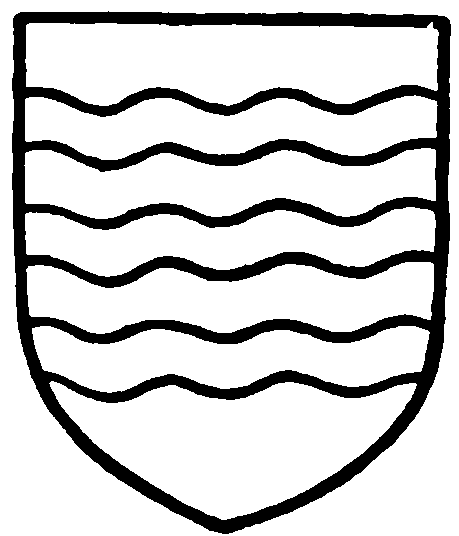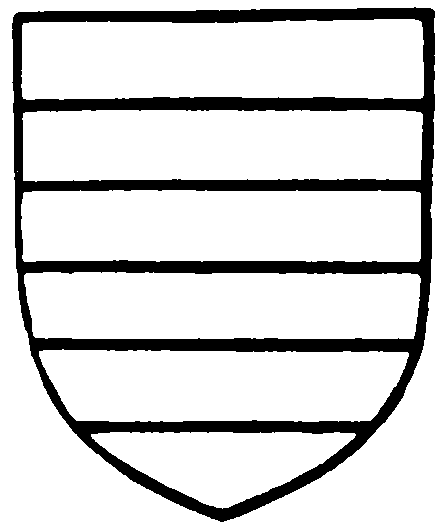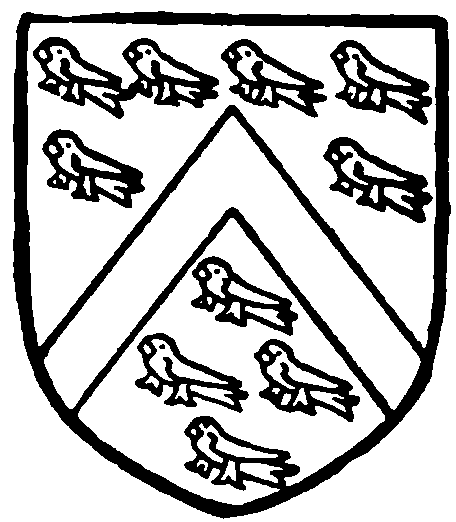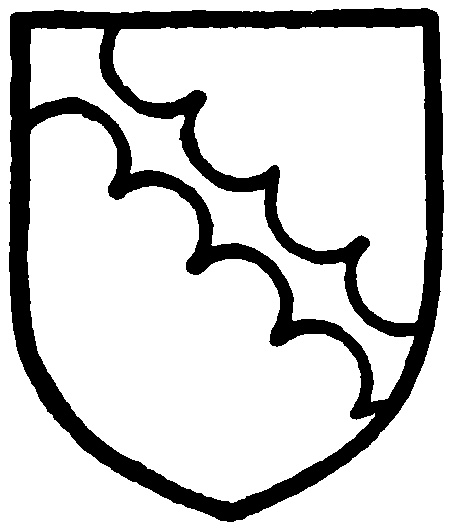A History of the County of Warwick: Volume 4, Hemlingford Hundred. Originally published by Victoria County History, London, 1947.
This free content was digitised by double rekeying. All rights reserved.
'Parishes: Hartshill', in A History of the County of Warwick: Volume 4, Hemlingford Hundred, ed. L F Salzman (London, 1947), British History Online https://prod.british-history.ac.uk/vch/warks/vol4/pp131-133 [accessed 23 April 2025].
'Parishes: Hartshill', in A History of the County of Warwick: Volume 4, Hemlingford Hundred. Edited by L F Salzman (London, 1947), British History Online, accessed April 23, 2025, https://prod.british-history.ac.uk/vch/warks/vol4/pp131-133.
"Parishes: Hartshill". A History of the County of Warwick: Volume 4, Hemlingford Hundred. Ed. L F Salzman (London, 1947), British History Online. Web. 23 April 2025. https://prod.british-history.ac.uk/vch/warks/vol4/pp131-133.
In this section
HARTSHILL
Acreage: 1,555.
Population: 1911, 2,450; 1921, 2,560; 1931, 2,542.
The parish of Hartshill comprises the southern part of the ancient ecclesiastical parish of Mancetter. Its situation in the East Warwickshire coalfield has wrought great changes in Hartshill in the last century. Its population has increased very considerably, and most of its inhabitants are now engaged in mining or in work at the quarries. (fn. 1)
Present-day Hartshill is a large village of comparatively modern houses. It is long and straggling, being built round a road running north to south, linking the Nuneaton-Atherstone and the Nuneaton-Coleshill roads. Along the latter lies the large colliery village of Chapel End, formerly dependent on Stockingford Colliery, which was just over the southern border of the parish. Situated near the edge of an undulating plateau, Hartshill village commands extensive views to the north and east.
Between the Nuneaton-Atherstone road and the village lie the extensive Hartshill quarries. Here red syenite granite is worked, as is manganese of a comparatively high quality. Tramways running in a north-easterly direction connect the quarries with the Coventry Canal and the L.M.S. Railway.
There is an extensive wood, known as Hartshill Hayes, stretching west from the village to the boundary of the civil parish of Oldbury. This corresponds to the manorial woods called in 1275 Suthaye, le Hokehaie, and le Newhaie. (fn. 2) On the eastern edge of the wood are the remains of Hartshill Castle.
The remains of the Castle (fn. 3) consist of a curtain-wall of the 13th century that inclosed an irregular five-sided polygon. The walls of four sides are still standing, roughly about 15 to 20 ft. high, two sides being complete. The east side, approximately parallel with the main road, is a little over 200 ft. long. The north side is complete and about the same length; it is curved outwards at the east end to form a right angle with the east wall. Only about 55 ft. of the south-east wall, in which was the entrance gateway, apparently flanked by octagonal towers, (fn. 4) is left. Of the west wall about 120 ft. is left from the north-west angle; it is not quite parallel with the east wall. The whole of the southwest portion has disappeared. Against the north wall was a chapel, of which a fragment survives.
The curtain-walls are built of local purple-brown granite rag and are about 4 ft. thick: at the north-west angle are cream sandstone quoins. At the north-east angle is a broad diagonal buttress of ashlar which has a medieval appearance but may have been added when a timber-framed dwelling-house was erected in this angle; this is now derelict, having been unoccupied for about 30 years. Another less substantial buttress at the south-east angle may have been added for a similar reason, as there are some slight indications of a former building in this angle.
The walls are pierced by cross-loops fairly regularly spaced about 14–15 ft. apart, except in the middle of the north wall where the chapel stood. The loops are 1½-in. slits with ring ends of 3 or 4 inches: the internal splays have shouldered lintels. The best preserved are in the east wall. Some of those in the north and west walls have had the slits enlarged to the widths of the bulls-eye ends; in the north wall is an original doorway with chamfered jambs and pointed head. East of it inside are the remains of the chapel; the east and part of the south walls are standing to some height; the rest is down. An east window had chamfered jambs: the head is missing, but inside are a few voussoirs of a chamfered round rear-arch; other voussoirs lie loose on the ground. In the south wall is a small round-headed niche, evidently a piscina. The chapel was about 36 ft. by 16 ft. Its walls were of dark granite rag in rather larger stones than the curtain-wall, with cream sandstone dressings. In the face of the north wall are some remains of an original plinth with a round top member above a splay.
The late-16th-century house in the north-east angle is of some interest. For its long east side and north end it used the curtain-wall, which was pierced for stonemullioned windows and later doorways; and a projecting chimney-stack of stone was built in the north wall. This has a wide fire-place of stone to the ground floor with a heavy chamfered lintel, a four-centred arched stone fire-place to the first floor, and a smaller moulded fire-place to the attic. Above are three diagonal shafts of thin bricks. The diagonal buttress was hollowed for a cupboard with a stone doorway. The west front was timber-framed, but only the southernmost bay is left standing with its roof. The gabled south end was replaced with later brickwork but has another projecting chimney-stack with two brick diagonal shafts: the ground-floor wide fire-place is of stone. The plan has two parallel ranges of rooms, east and west, the latter including the two large chambers with the fire-places, and a middle entrance hall which probably contained the staircase. The framed partitions have wattle and daub infilling, and one has moulded studs. A doorway in the north room has a triangular arched head. The north-east room has a re-used moulded medieval ceiling beam: the others are stop-chamfered. The roof of the surviving south-west part is of braced tie-beam and queen-post type.
There are some slight traces of other former buildings within the inclosure, which is fairly level. A wide moat surrounded the site, the eastern arm being continued farther south. Beyond the north moat the high ground continues northwards to a spur and includes a moated mound with a still higher mound north of it. It is all overgrown with trees and the ancient walls are covered with verdure.
At Hartshill Green are two houses showing 17thcentury timber-framing. One on the main road has a rough-cast front and framed gabled north end. The other of T-shaped plan has been reconditioned and the framing of the middle wing outlined in cement facing. It has a central chimney-stack with two starshaped shafts of brick.
One of the cottages on the Green (fn. 5), said to be the birth-place of the poet Michael Drayton, who was born at Hartshill in 1563, was pulled down for road widening in 1941.
The modern church of the Holy Trinity south-east of the castle is built of stone with brick dressings, and has an apsidal chancel. The west doorway and window are of the 12th-century style.
MANOR
At the time of the Conquest an estate of 2 hides in Hartshill and Ansley was held by the Countess Godiva. (fn. 6) The overlordship, therefore, came to the Earls of Chester, and in 1229 Earl Ranulph recovered his seisin of the lands of Robert de 'Hardreshull' (presumably in Hartshill), which had been taken into the king's hands on the supposition that they were held of the king by render of a mewed sparrow-hawk. (fn. 7) Ranulph's sister and co-heir was mother of Hugh d'Aubigny, Earl of Arundel, who held 2/3 knight's fee in Hartshill in 1235. (fn. 8) On the death of Earl Hugh the fees of Chester assigned in dower to his widow Isabel in 1243 included one in Hartshill, held by William de Hartshill, (fn. 9) whose services were next year conveyed to John FitzAlan, (fn. 10) a co-heir of Earl Hugh. By 1303 the overlordship had passed into the hands of Ralph Basset of Sapcote. (fn. 11) The manor was held of the last of this line, Ralph Basset who died in 1378; (fn. 12) his daughter and co-heir Elizabeth married Richard, Lord Grey of Codnor, (fn. 13) and in 1482 Hartshill was held of Henry, Lord Grey. (fn. 14) The only later reference to an overlordship is in 1628, when the manor was said to be held of 'the heirs of Ambrose Cave, esq.', (fn. 15) the explanation of which is obscure.

Basset of Sapcote. Argent three bars wavy sable.

Grey of Codnor. Barry argent and azure.
According to Dugdale the manor of Hartshill was held by Hugh de Hartshill in the time of Henry I. (fn. 16) William de Hartshill died in 1262, (fn. 17), and next year his widow, Maud, was pardoned for marrying William de Arden without royal permission. (fn. 18) Robert, William de Hartshill's son, held the manor in 1265, but, after his death at Evesham, supporting Simon de Montfort, it was forfeited and granted to Warin de Bassingbourne. (fn. 19) It was subsequently redeemed and John de Hartshill, Robert's brother, died in 1276 seised of the manor. (fn. 20) His son and heir William was only 5 years old and was in ward to John de Monhaut. (fn. 21) In 1292 William, then described as the king's yeoman, was granted free warren in all his demesne lands at Hartshill, a privilege which was confirmed in 1295. (fn. 22) At his death in 1303 his widow Juliane daughter of Eustace de Hacche (fn. 23) received in dower ⅓ of the manor, including rents of 4 free tenants, 3 villeins, and 4 cottars. (fn. 24) William's son John was only 10 years old, and John de Wysham acted as his guardian until he came of age. (fn. 25) John de Hartshill conveyed the manor in 1326 to Philip de Hartshill, (fn. 26) presumably in trust, as in 1356 Hartshill was settled on the same Sir John. (fn. 27) He died about 1368, and as his son William had died in 1349 his heirs were his three daughters by his second wife, Margaret Stafford. (fn. 28) Elizabeth, one of his daughters, married John Colepeper, and the manor passed to their son, Thomas Colepeper, in 1378, (fn. 29) and he held it in 1392. (fn. 30) The Colepeper family retained Hartshill down to 1547, although in 1475 Sir John Colepeper pledged it, together with other property, as security for a debt of 1,000 marks which he owed to Brian Talbot. (fn. 31) Sir John recovered the manor next year, and died seised of it in 1480. (fn. 32) His grandson Thomas Colepeper seems to have mortgaged the estate in 1547, (fn. 33) and later to have sold it to Sir Anthony Cooke, of Gidea Hall, Essex, (fn. 34) who died seised of it in 1576. (fn. 35) His grandson Anthony gave the manor in 1584 to his uncle William, (fn. 36) who had married Frances, daughter of Lord John Grey. When William died in 1589 Hartshill was left to his widow in trust for his eldest son, William, then aged 14. (fn. 37) In 1605 it was conveyed by Sir William Cooke and Joyce his wife to Sir John Morryce and Edward Turner, (fn. 38) who were possibly acting for George Purefoy.

[Hartshill. Argent a cheveron sable between ten martlets gules.

Colepeper. Argent a bend engrailed gules.
George Purefoy was holding the manor at his death in 1628. (fn. 39) His son George married Anne, daughter and co-heir of Sir Thomas Glover of Hayes (Middx.) (fn. 40) by Jane daughter of Francis Roberts. (fn. 41) A complicated series of transactions, each concerned with ⅓ of the manor and tithes of Hartshill and of the manor of Hayes, took place between various persons connected with the Purefoy family between 1641 and 1657, (fn. 42) but eventually in 1702 the manor was sold by Sir Edward Seabright, bart., and Anne his wife, Dorothy Purefoy, widow, and Jane Purefoy, spinster, to Sir Nathan Wright, Keeper of the Great Seal. (fn. 43) Sir Nathan died in 1721, and his younger son, William Wright, was lord during the first half of the 18th century, (fn. 44) but sold the manor in 1751 to Robert Prinsep, whose son Thomas, of Croxall, Staffs., conveyed it in 1783 to Thomas Fisher of Raunston Hall, Leics. (fn. 45) He sold Hartshill about 1791 to Ambrose Joseph Salisbury, who is called lord of the manor at the time of the Inclosure Award in 1811, though he had apparently already sold it to the Hon. Thomas Bowes of Caldecote, (fn. 46) who was lord in 1818 and, as Earl of Strathmore, in 1821; (fn. 47) but Dempster Heming of Caldecote Hall possessed it in 1828. (fn. 48) Kirkby Fenton was lord of the manor in 1850 and 1884. (fn. 49) Captain H. L. Townshend of Caldecote Hall held the manor in 1900 and until his death in April 1924. Since that date the title of lord of the manor of Hartshill appears to have lapsed. (fn. 50)
In 1221 there is mention of Robert Panke who was miller to Hugh de Mancetter; (fn. 51) and in 1304 a mill called Panckemulne was attached to the manor of Hartshill. (fn. 52) There are other references to a watermill here in 1584 (fn. 53) and 1605, (fn. 54) and its site may be commemorated in the name of Leather Mill Farm on the east of the River Anker.